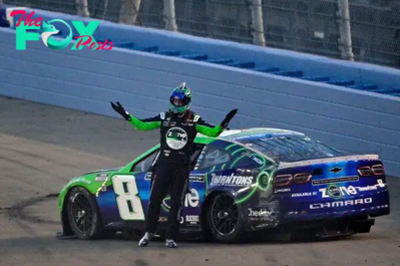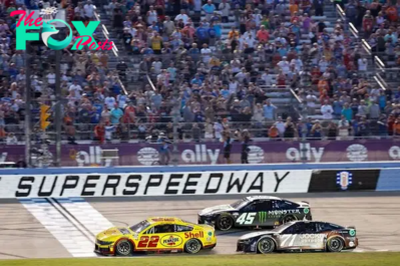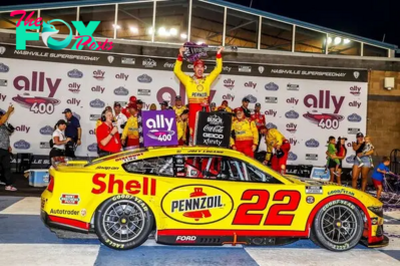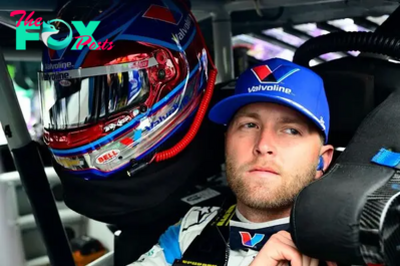NASCAR
NASCAR's wet weather racing exploit was flawed, but 'so much fun'
At Richmond earlier this season, the Cup series had its first experience utilizing wet weather tires on shorter ovals as teams began the race with them and ran the first 30 laps until the track dried.
It was just a taste, but most observers – and many drivers – found the racing on the treaded wet tires better and more entertaining than on the slicks used for the remainder of the race.
Sunday at New Hampshire Motor Speedway saw an even bigger opportunity and got an even bigger payoff.
The race was red flagged after 219 laps when heavy rain and thunderstorms moved into the area of the track. Tyler Reddick appeared ready to claim a victory thanks to a gutsy decision not to pit during stage break as his 23XI Racing team hoped the rain would come before the end of the race.
They were right but likely didn’t bet on NASCAR deciding to wait out a nearly two-hour, 15-minute delay and then run the remainder of the race on wet weather tires with nightfall approaching.
In all honesty, it was hard to find anyone – media member, fan or driver – who did.
An unlikely restart
Yet, once NASCAR got the standing water off the track, it allowed teams to change to wet weather tires while parked on pit road in their stalls and also allowed them to add fuel.
When the race returned to green with what turned out to be 77 laps remaining, “the fun” – as race winner Christopher Bell put it – began.
Drivers moved all over the track in multiple lanes, and even created some new ones like the apron. It appeared the only place a driver didn’t dare go was the infield, although a couple looked at times as if they might.
There were a handful of cautions for wrecks, a couple wrecks under caution and even an overtime restart.
Bell ended up winning the race – not exactly a shock winner as he had won on the track a day earlier in the Xfinity Series race and owned a previous Cup victory on the 1.058-mile oval.

Race winner Christopher Bell, Joe Gibbs Racing, Rheem Toyota Camry
Photo by: David Rosenblum / NKP / Motorsport Images
However, a quick examination of the results illustrated one glaring truth – the decision to continue the race while the track was still damp drastically changed the results.
Only three of the drivers who would have finished in the top 10 had the race not restarted, were around when it did end after 305 laps – and one of them was the winner.
The two drivers best in position to challenge Bell on the final restart for the win – Stewart-Haas Racing teaMMAtes Chase Briscoe and Josh Berry – weren’t running well enough to even contend earlier in the event.
Reddick, who never ran up front until his decision to stay out after Stage 2, managed to remain in the top 10 and finished sixth. Kyle Larson ran about the same – seventh at the red flag and finished fourth.
Two different races
No one would have predicted top 10 finishes for Chris Buescher, Ricky Stenhouse Jr. or John Hunter Nemechek after watching their performance in the first 219 laps.
As Bell put it after the race, “it was literally the tale of two completely different events.”
He even admitted that while he had a solid run going before the red flag – he was ninth – the wet weather racing greatly improved his fortune.
“I mean, what race do we want to talk about? Do we want to talk about Loudon dry or Loudon wet?” he said after to laughter after entering the media center.
“Obviously, the rain completely shook up what was going on track, and in the dry we started off really well. I was able to get the lead in the first stage, and then Martin (Truex) Jr. really came on there in Stage 2.
“Definitely I think that we had some room to improve on the dry stuff. I definitely didn’t have the dominant car. Then whenever the wet came, it was just like – I mean we might as well have been at somewhere completely different.”
In terms of the competition on the track, that was certainly the case.
The fans that waited out the delay – at the track and watching on TV – certainly got bonus entertainment and in the end, that’s what most will remember.
Even in the afterglow of a successful execution of racing on a wet oval, there were some noticeable problems that will need addressing in the future.
Among them:
-It seems fair to allow every team to put on the wet weather tires while the race remained red-flagged but when NASCAR allowed teams to also add fuel, it altered the outcome of the race for those that had stayed out after Stage 2 and gambled on the weather coming. NASCAR’s decision to resume the race shouldn’t be a free pass to teams that made what ended up being a bad strategy decision.
-NASCAR is not allowing teams to pick when to use which tire – it makes the decision. This could be understandable before there were actual on track results with the tires, but now that there are, it’s time to let teams make the type of calls they’ve spent their careers doing.
-Clearly there is a safety concern of allowing competitive pit stops on a pit road that remains wet, which is why NASCAR has so far not allowed them. Perhaps the cars could be parked in some different location under a red flag for rain that would allow pit road to get worked on as well as the track while preparing for a return to racing.
-Teams were given four sets of wet weather tires for Sunday’s race and ended up using three. At some point, NASCAR is going to be confronted with a situation where it faces conditions that would allow the tires’ use for an entire race. Yet, they clearly are not equipped to do that. It would do NASCAR well to set in place some rules as to how much of a race it is willing to conduct under adverse conditions rather than find itself in the middle of an event and having to bring it to a premature conclusion.

Ryan Preece, Stewart-Haas Racing, Mohawk Northeast Ford Mustang
Photo by: Rusty Jarrett / NKP / Motorsport Images
Again, none of the issues that arose in Sunday’s race ultimately led to a bad outcome or experience, but they remain legitimate questions and were raised by teams during the event.
One other came up as well – why NASCAR never employed its ‘darkness policy’ which includes setting a time for the race to end when facing darkness and no lights? More than one crew chief seemed puzzled that it was never mentioned.
NASCAR takes a lot of criticism over various issues, and some is certainly justified but it stands far ahead of any other major racing series in its investment to improve track drying efforts and wet weather racing on road courses and now ovals.
Sunday’s race at New Hampshire – both of them even – was a showcase of the big payoff.
-

 NASCAR4m ago
NASCAR4m agoNASCAR Cup Nashville: Ty Gibbs leads the way in practice
-
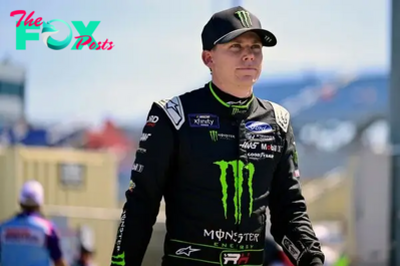
 NASCAR4m ago
NASCAR4m agoRiley Herbst has "a lot of options on the table" in NASCAR for 2025
-
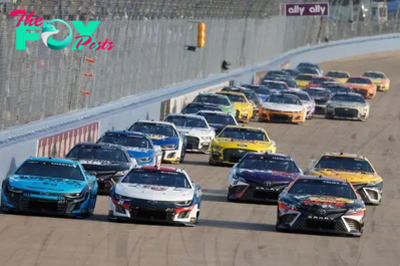
 NASCAR4m ago
NASCAR4m ago2024 NASCAR at Nashville schedule, entry list, and how to watch
-
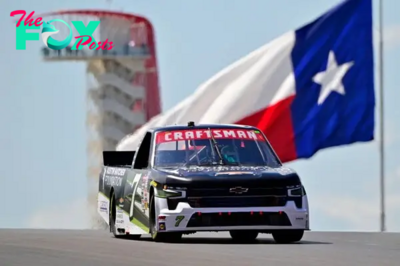
 NASCAR4m ago
NASCAR4m agoAmerica’s got talent! Is Trackhouse’s versatile teenager the next big thing?
-
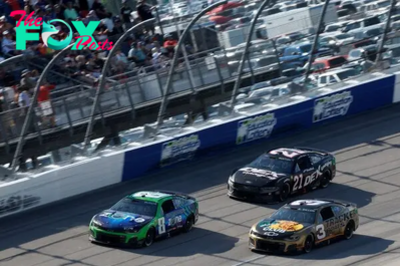
 NASCAR4m ago
NASCAR4m agoLong-time RCR competition executive Andy Petree retires
-
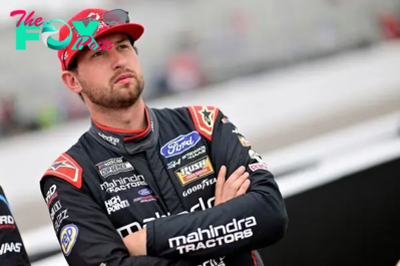
 NASCAR4m ago
NASCAR4m agoJoe Gibbs Racing confirms Chase Briscoe as Truex's 2025 replacement
-
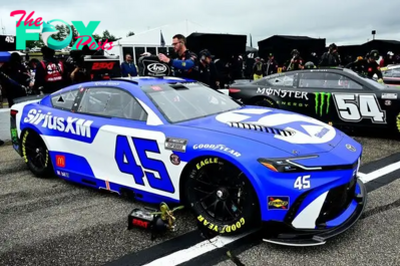
 NASCAR4m ago
NASCAR4m agoReddick: "It's a bummer" to lose after leading during lengthy rain delay
-
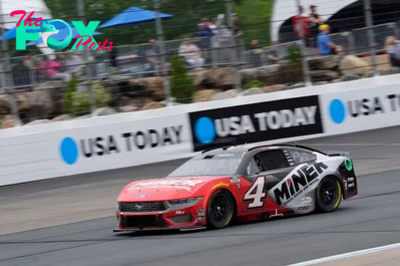
 NASCAR4m ago
NASCAR4m agoJosh Berry cashes in on wet weather racing's "new opportunity"


